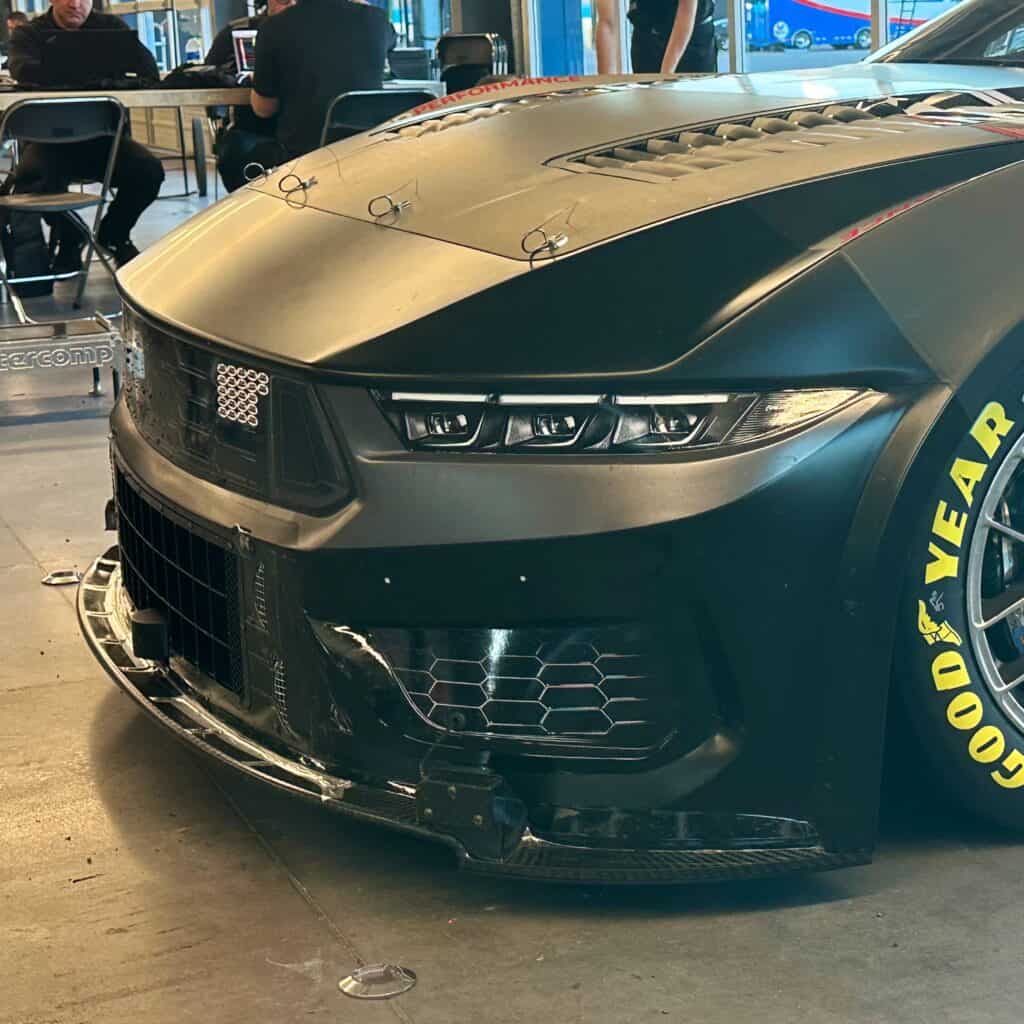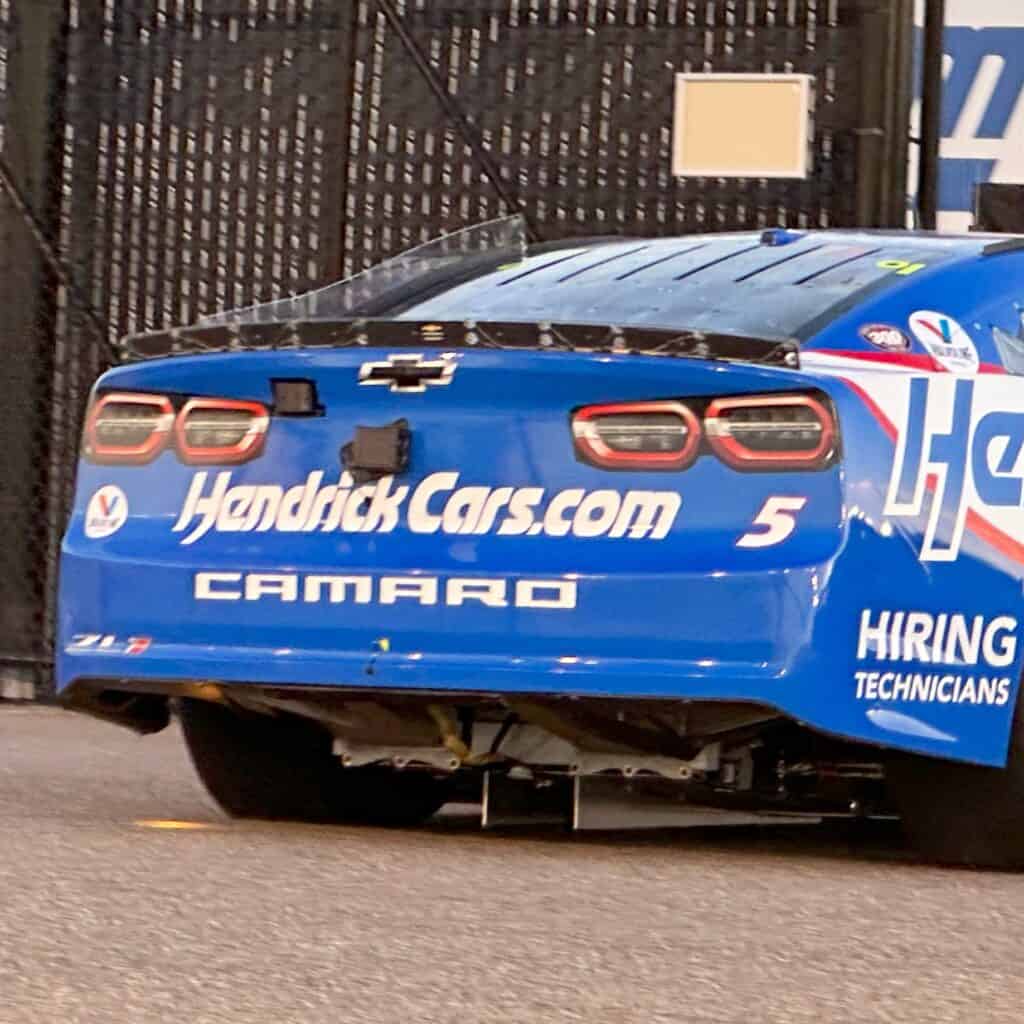By Cole Cusumano, Staff Writer
AVONDALE, Ariz. – Exactly one month removed from when Ryan Blaney won the 2023 NASCAR Cup Series title, some of the sanctioning body returned where all the magic went down to conduct a two-day test at Phoenix Raceway in an effort to improve the short-track package for the upcoming season.
When the test was announced during championship weekend, NASCAR had intentions of running through a variety of modifications in relation to aerodynamics, tires, muffler and gearbox on the seventh-generation stock car ahead of its third tour around the Cup circuit.
Blaney was one-of-six drivers to participate in the Phoenix test along with Chris Buescher, Erik Jones, Christopher Bell, Kyle Larson and Corey LaJoie, who were all chosen as representatives for their respective original equipment manufacturers (OEMs).
Like most all tests conducted by NASCAR, teams first established a baseline for what they sought to change by running the same short-track package and tire combination from the finale one month ago – a setup that derived from a similar test at Richmond Raceway in August.
Those who took part in the test at Richmond hardly felt a difference in how the car drove. However, most every driver was able to feel moderate to significant changes in what was being applied on the first day of on-track activity in Phoenix.
Due to the higher speeds produced at the one-mile Phoenix as opposed to the three-quarter-mile Virginia track, NASCAR Vice President of Vehicle Performance Dr. Eric Jacuzzi believed testing at the site of the series finale manifested more of what the sanctioning body was expecting when they experimented at Richmond about three months ago.
“I think our goal is to have some direction coming out of here,” Jacuzzi said. “It’s a tough thing to do, right? It’s only six cars … But I think for us it’s coming out of here with a direction on the tire, coming out with direction on the aero package that, ‘Yes, this is going to be neutral to positive.’
“There’s a lot to it that’s going to play into the early season and then kind of what we do in the future going forward.”
Following the baseline test to start the session on Tuesday, aerodynamic modifications were made in the form of one alternate design each for the splitter and diffuser.

While specifics weren’t provided on the dimensions of the new splitter, it incited the largest reactions across the board from drivers who participated in the test – especially the reigning champ.
“We unloaded exactly how we were here in the fall with this car,” Blaney said. “Ran a couple hours on it and then did the different splitter – big difference. Massive with the way it drives. I mean, there’s so much downforce taken off of it with that. It drove hugely different, which it should. I mean, it’s a massive aero loss when you do that.
“Hopefully we can continue to tweak it a little bit. I think we can get a little better.”
Even Larson, who didn’t feel a significant difference in general with what was tested, said he did notice a slight change in how the car handled with the alternate splitter.
“I’m not really into the technical side of it,” Larson said. “I’m just out there driving and not necessarily putting two and two together, but nothing seems way different to me. Ride quality and stuff changed with the different splitter, but I don’t know how it races any differently in traffic or anything like that.”
For the final application of the Tuesday session, teams ran a “simplified” diffuser, which wound up being an integral part of the short-track package test in Phoenix.
While the design isn’t finalized, the experimental diffuser was composed of aluminum and only featured two strakes at a 90-degree angle in the center of the underwing component. The diffuser ran in 2023 was made of a carbon-fiber composite and had seven blades.
Although teams only tested the new diffuser with the new splitter on the first day, driver reception was so positive, NASCAR decided to keep it on for the second day as they ran other splitter and tire combinations.
As is related to aerodynamics, a representative from NASCAR confirmed they did not conduct any tests without the diffuser or with modifications to the spoiler.

The final and most well-received experiment of the opening session was use of new Goodyear tires designed to create more fall off during green-flag runs to promote passing – something that’s been aggressively pursued for short tracks since the introduction of the Next Gen car.
Goodyear brought softer left-side tires with heavier tread gage on the rights to serve as a combatant for the thicker gage tires used at Martinsville Speedway following the Richmond test.
In an attempt to deviate from methods used at the Richmond test, NASCAR changed the on-track procedure for group runs at Phoenix by lining up all six cars single-file, slowest to fastest, to simulate green-flag racing.
Whereas in August, drivers were ordered to line up in three-double-file rows, which made it much easier to pass other cars.
After surveying drivers who participated in the session, it was evident the tires were one of the more prominent variables during the two-day test, and there’s a decent likelihood there will be a variation of them in 2024 – but nothing has been confirmed.
“Tire stuff was really good,” Jones said. “I think Goodyear’s got some good notes from that and probably it’s going to apply to a lot of places. We’ll see how durability does with the tire that we tried that everybody kind of liked.
“It was definitely – this isn’t really a tire test – but of all the tires I’ve tested over my career, by far, probably today was the biggest I’ve noticed a difference.”
Given the positive feedback provided by drivers in the post-test debrief on Tuesday, NASCAR decided to predominantly work around improving the aerodynamics of the short-track package centered around the simplified diffuser with different splitter and tire combinations.
As a result, prior plans to modify the gearbox were nixed.
Going into the test, NASCAR had intentions of trying to limit or completely eliminate shifting on short tracks. Instead, the sanctioning body and teams involved felt it would be more productive to act on what was learned the day prior, as work to the transaxle would be too time consuming for one day.
The only driver made available to the media on Wednesday was Larson, who said he “didn’t care,” the gearbox wasn’t being tested.
Outside of what was already experimented with in the first session, the only real changes made during the final day of testing were to the muffler, as drivers have been outspoken in their concerns of excessive heat in the car.
Mufflers have been a hot topic – both literally and figuratively – since they were added to the Next Gen car in 2023 in an attempt to silence engine output by six to 10 decibels for Los Angeles Memorial Coliseum and the Chicago Street Course.
Instead of issuing a new muffler, NASCAR opted to tamper with the duct work of the current part to try to aid in expelling heat.
Standing on pit road, the only noticeable difference from the muffler modifications was the absence of the ear-piercing scream given off by the engine, which often even bleeds through headphones.
“I haven’t felt really (any) heat difference,” Larson said. “I could definitely tell a sound difference, which I like. I definitely think our race cars are way too loud – and probably are still too loud with the muffler. I think the cars could be quieter to help the fan experience.”
Make no mistake: these cars still sound mean. Also keep in mind, there were only six cars on track and these changes would only apply to the L.A. Coliseum and Chicago Street Course.
Finally, to put to rest what everyone wants to know – No, there were no talks or tests of increased horsepower.
“Power is a topic that comes up, but we’ve kind of gone down this path with the engine builders, the OEMs and the teams to contain costs and all that,” Dr. Jacuzzi said. “Will we look at it? Perhaps in the future. But there’s a lot of people behind that that need to come together and agree.
“It’s not just as simple as, ‘Hey, we’re going to do this and everyone’s going to be happy. We’ve got to be smart about what we do there. There’s a lot of inertia behind the engines and producers of those engines. Really got to bring everybody along on that journey.”
Ultimately, NASCAR accomplished what they set out to achieve and that was to have a good sense of direction for where to go with the short-track package in relation to aerodynamics and tires leaving Phoenix.
If anything were to get implemented next season for the short-track package, it would likely be the simplified diffuser and a new tire combination based on response from the drivers. Larson was the only driver made available to comment on the muffler modifications, but him being an advocate is also a strong indicator that changes may occur in that area.
While it’s reasonable to anticipate changes in 2024, nothing has been confirmed by NASCAR as of the end of the test on Wednesday, December 6.
Leave the exhaust loud the fans like it. Just drive Larson And maybe you will get better